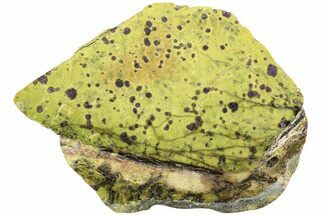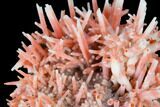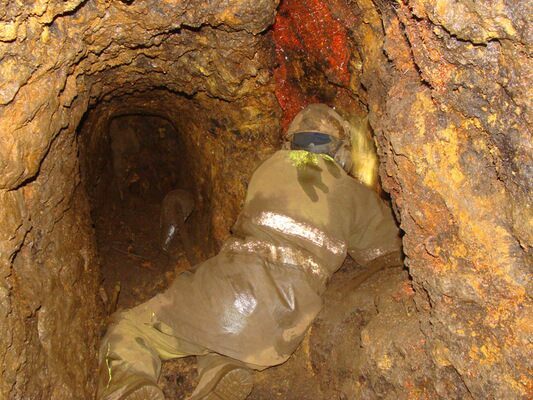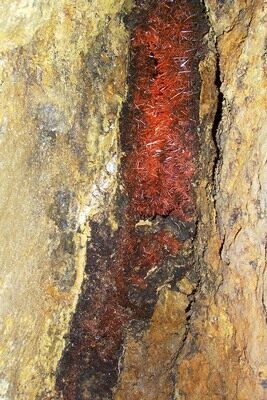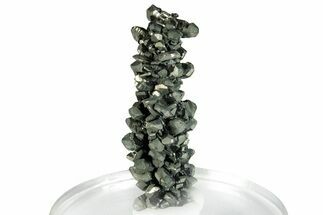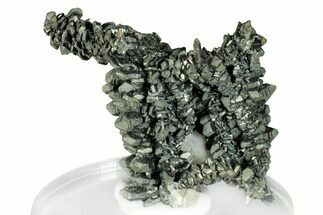This Specimen has been sold.
1.35" Crocoite Covered In White Gibbsite - Tasmania
This is a gorgeous, 1.35" wide cluster of bright orange crocoite crystals from the famous Adelaide Mine in Tasmania. The crystals are extremely delicate and the specimen is mounted with hot glue inside of a small acrylic perky box for display. The white mineral that partially encapsulates many of the crystals is gibbsite.
Crocoite is a rare, brilliant red-orange mineral consisting of lead chromate. It was first discovered in Russia and has since only been found in only a few other localities around the world. The crystals often form as long, slender prisms arranged in dense clusters.
The Adelaide Mine in Tasmania, Australia is undoubtedly the world’s most famous producer of crocoite specimens. While the mine has been worked over the last few decades, only a small number of pockets of top-quality crocoite have been found. One pocket was located in the 1970s, another in the 1990s, and most of the recent material is coming from a single large pocket found in 2010.
The Adelaide Mine in Tasmania, Australia is undoubtedly the world’s most famous producer of crocoite specimens. While the mine has been worked over the last few decades, only a small number of pockets of top-quality crocoite have been found. One pocket was located in the 1970s, another in the 1990s, and most of the recent material is coming from a single large pocket found in 2010.
Gibbsite is an aluminum hydroxide with the chemical formula Al(OH)3. It is a secondary mineral that forms in weathered surface zones of low-silica igneous rock, pegmatites, clay deposits, and limestones, and is often a component of the aluminum ore bauxite. It exhibits a variety of different colors depending on the atmosphere and impurities present during formation, and is primarily found encrusting rock in globular, botryoidal, and stalactitic habits.
Gibbsite's first documented discovery was in 1820 by Chester Dewey, who found it included in a bauxite specimen. It was mistakenly identified as wavellite, but was later reidentified as a new mineral and named hydrargillite. In 1822, the name was changed to Gibbsite in honor of a mineralogist by the name of George Gibbs.
Gibbsite's first documented discovery was in 1820 by Chester Dewey, who found it included in a bauxite specimen. It was mistakenly identified as wavellite, but was later reidentified as a new mineral and named hydrargillite. In 1822, the name was changed to Gibbsite in honor of a mineralogist by the name of George Gibbs.
SPECIES
Crocoite & Gibbsite
LOCATION
Adelaide Mine, Dundas, Tasmania, Australia
SIZE
1.35 x 1"
CATEGORY
ITEM
#171652
 Reviews
Reviews
